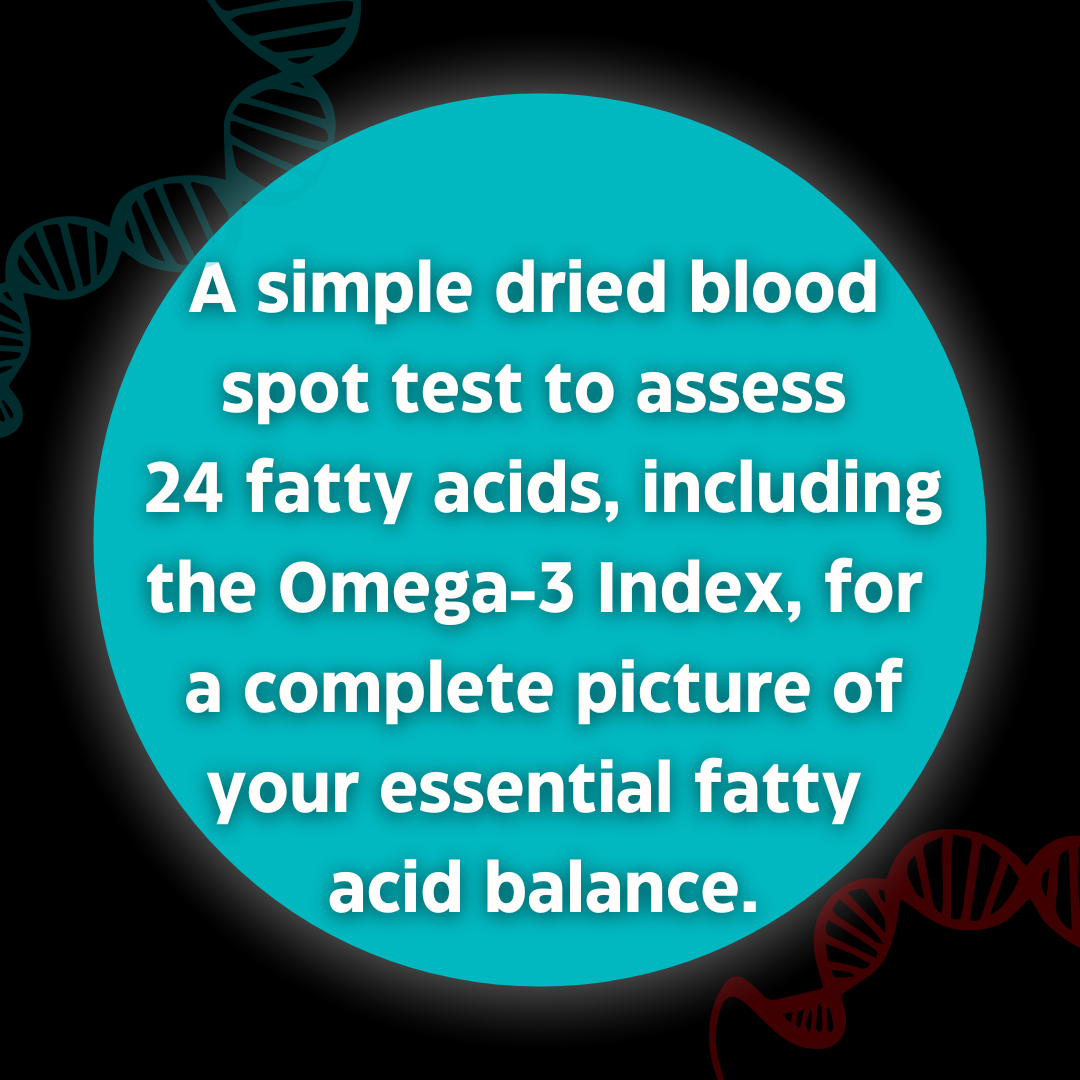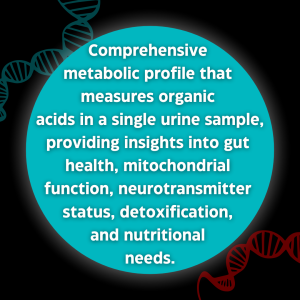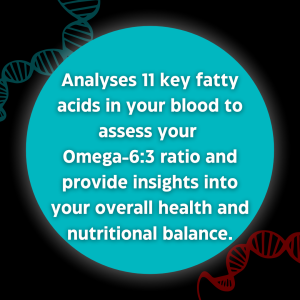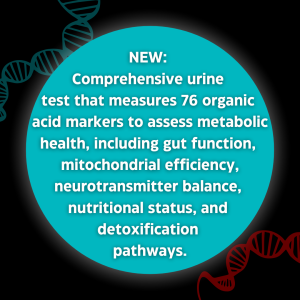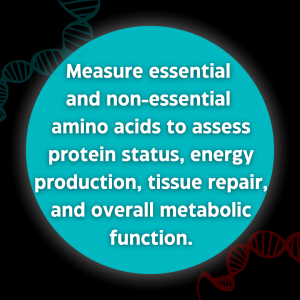Description
What Patients Might Benefit from Omega-3 Index Testing?
Abnormal fatty acids status has been associated with many conditions, including but not limited to:
ADHD, Alzheimer’s Disease, Arthritis, Autism Spectrum Disorders, Cardiovascular Disease, Certain Cancers, Cognitive Development, Dementia, Depression, Diabetes, Learning Ability, Oxidative Stress and Inflammation.
Why Conduct the Omega-3 Index Complete Test?
Understanding and maintaining proper levels of fatty acids is a vital key to optimizing health. The Omega-3 Index Complete Test provides comprehensive information and includes the following:
Omega-3 Index
The Omega-3 Index is the proportion of long-chain omega-3s, eicosapentaenoic acid (EPA) and docosahexaenoic acid (DHA), of all fatty acids in your red blood cell membranes. It reflects the omega-3 status of your body over the last 4 months, similar to how hemoglobin A1C reflects long-term glucose blood levels. As a part of an overall healthy lifestyle, an Omega-3 Index in the 8-12% range may help to maintain heart, brain, eye and joint health. To increase your Omega-3 Index, eat foods rich in EPA and DHA, especially “oily” fish such as those in the accompanying table. They can also be obtained from dietary supplements (fish, krill, cod liver, algal oils) and functional foods (omega-3 enriched milk, eggs, etc.).
Omega-6:Omega-3 Ratio
Omega-6:Omega-3 (n6:n3) ratio is calculated by dividing the sum of seven omega-6 fatty acids by the sum of four omega-3 fatty acids in whole blood. Only one omega-6 fatty acid, arachidonic acid (AA), and one omega-3 fatty acid, eicosapentaenoic acid (EPA), make up the AA:EPA ratio. The desirable range for the Omega-6:Omega-3 ratio is 3:1 to 5:1, and the desirable range for the AA:EPA ratio is 2.5:1 – 11:1. The desirable ranges for the ratios were calculated to correspond to the desirable range for the Omega-3 Index due to the strong relationship between among these metrics.
The Trans-Fat Index
The Trans Fat Index is the percent of 18:1 and 18:2 trans fatty acids of total fatty acids in red blood cell membranes, and the desirable range is <1%. Trans fatty acids (or trans fats) in our blood come only from the food we eat because our bodies cannot make them. Trans fats in the diet come from two sources: 1) industrial production by the “partial hydrogenation” of vegetable oils, in which liquid oils are converted into solid fats to be used in processed foods, and 2) meat and milk products of ruminant animals, like cows and goats. The fatty acids that make up the Trans Fat Index were chosen because they were typically found in processed foods, but a small amount may come from ruminant sources.

